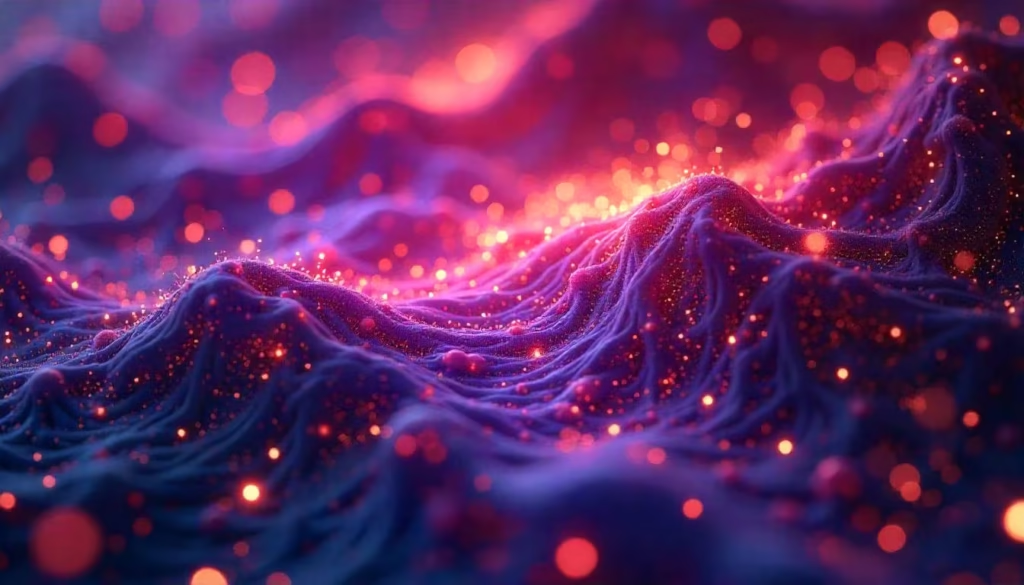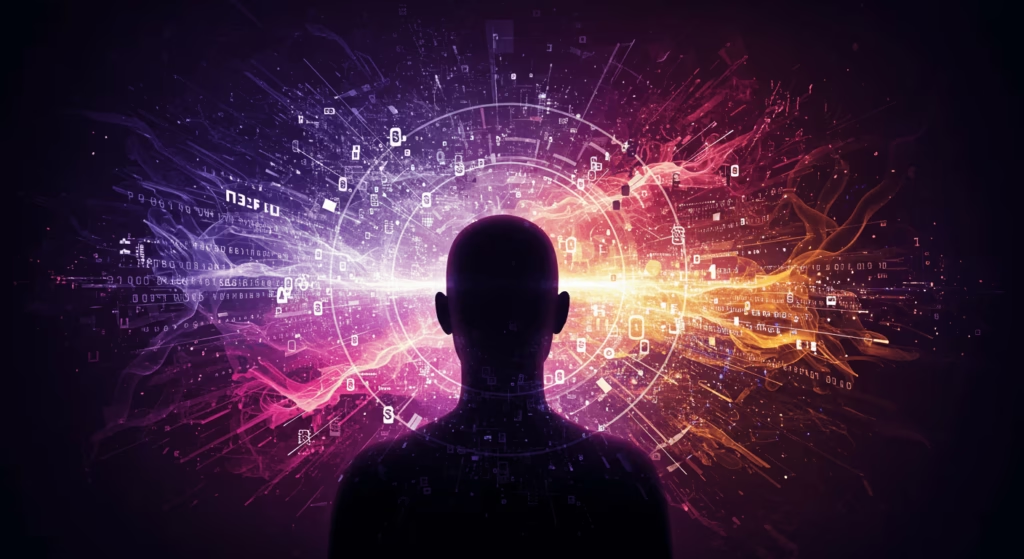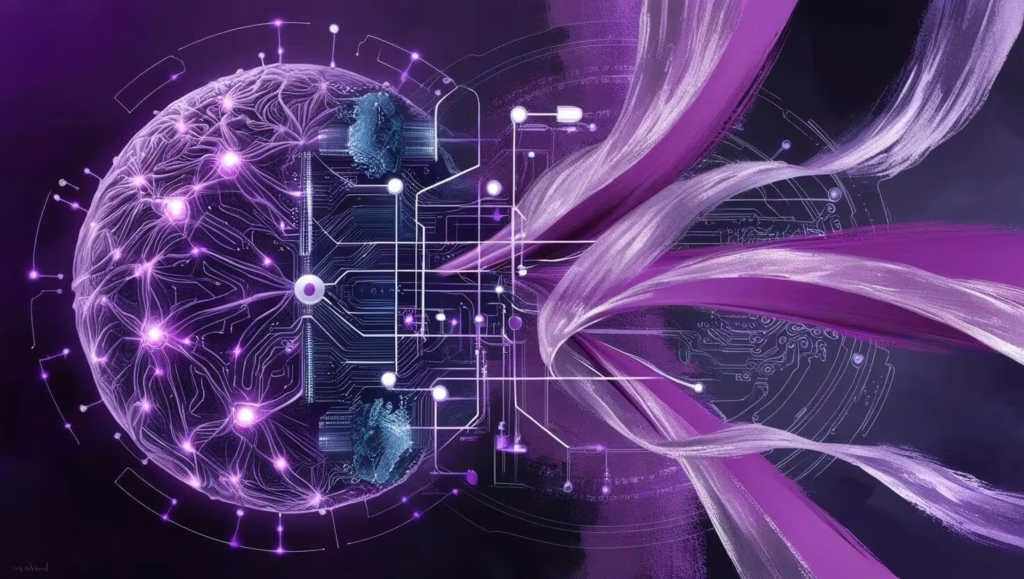In the art world, the intersection of AI and art is paving the way for a new chapter in creativity. As artists and technologists collaborate, they navigate this new frontier, resulting in entirely new art forms that challenge our understanding of traditional art forms. By using AI models, creators can explore the fusion of human creativity and machine capabilities, leading to entirely new methods of expression.
This groundbreaking shift is not merely about replacing the creativity of the human artist; instead, it enhances and reshapes the creative process itself. The essence of creativity remains rooted in human emotion and experience, while AI offers tools that expand the possibilities of forms of art. As we delve deeper into this new art form’s landscape, we see AI as a collaborator rather than a competitor, enriching our forms of expression in the digital age.
What is AI Art and How Does it Work?
AI Art represents a fascinating intersection where art meets technology and creativity. At its core, it involves AI to generate artwork, allowing machines to create pieces that evoke human creativity and emotion. Through the integration of AI, these systems can analyze vast datasets of existing art, learning styles, and techniques that inform their creations. This convergence of art and AI is not just about machines creating; it often involves collaboration with human artists, who guide and influence the direction of the work, ultimately redefining what art can be in the digital age.

The art generated by Freepik
Understanding AI-generated Art
The Role of Algorithms in Artistic Creation
AI reshapes artistic creation and how we perceive and produce art. Visionary artists like Holly Herndon and Mat Dryhurst have embraced this technology, demonstrating how AI is a collaborator rather than a mere tool. By incorporating algorithms into their work, they showcase the potential of AI-generated content to enhance human creativity. This partnership between human and machine introduces new dimensions to the artistic process, enabling artists to explore uncharted territories. The role of AI in art is not just about automation; it challenges traditional notions of authorship and originality, inviting a broader dialogue about the future of creativity in an increasingly digital age.
How AI Systems Learn Artistic Styles
AI systems learn artistic styles by analyzing vast datasets of existing artwork. Through this process, they identify patterns, textures, and techniques that characterize different styles. Holly Herndon and Mat, whose works serve as training material, influence the art these systems create. As AI acts on this information, it begins to mimic and reinterpret these styles, producing unique compositions. In this way, AI serves as a tool for innovation, expanding the boundaries of creativity. Moreover, AI introduces new possibilities for collaboration between machines and humans, with AI-generated art offering fresh perspectives that challenge traditional notions of authorship and originality.
How is AI Redefining the Art World?
Artificial intelligence significantly transforms the art world, creating a new landscape where creativity meets technology. Artists are increasingly embracing AI tools to produce art made through algorithms and machine learning, pushing the boundaries of traditional artistry. These innovations allow for the exploration of new styles and techniques that were previously unimaginable. Meanwhile, ai generated artworks are gaining recognition in galleries and auctions, challenging the definition of authorship and originality. This fusion of art and technology not only enriches the creative process but also invites discussions about the future of artistic expression in a rapidly evolving digital age.
New Forms of Creative Expression
In today’s rapidly evolving world, new forms of creative expression are emerging, driven largely by technological advancements. Artists are utilizing digital platforms to share their work, reaching global audiences with ease. From virtual reality experiences to interactive installations, creativity knows no bounds. Social media has further transformed the landscape, allowing creators to engage with their followers in real-time, fostering a sense of community.
Moreover, the rise of AI-generated art has sparked debates about authenticity and authorship, challenging traditional notions of creativity. As we embrace these innovations, the definition of art expands, inviting new voices and perspectives.
The Intersection of Art and AI: A New Era
The intersection of art and AI marks a transformative era in creative expression. Artists are increasingly leveraging advanced algorithms to push the boundaries of traditional mediums, merging technology with human ingenuity. This collaboration not only democratizes the creation process but also challenges our understanding of authorship and authenticity in art.

The art generated by Google
AI as a New Tool for Artists
AI is revolutionizing the way artists create and express themselves. By leveraging advanced algorithms, artists can explore new dimensions of their creativity, producing works that blend traditional techniques with cutting-edge technology. The integration of machine learning enables the generation of unique patterns, colors, and styles that may not have been conceived through conventional methods.
Moreover, AI is a collaborative partner, helping artists refine their ideas and push the boundaries of their work. This innovative tool offers endless possibilities, allowing creators to experiment without fear of failure, ultimately leading to a new era of artistic innovation.
As AI tools evolve, they offer unprecedented opportunities for innovation, enabling artists to explore new styles and concepts that were previously unimaginable. The fusion of art and AI invites audiences to engage with works dynamically, fostering interactive experiences that reflect the complexities of our digital age.
What are the Benefits and Challenges of AI in Art?
AI in art offers numerous benefits, such as enhancing creativity and providing artists with innovative tools to generate unique pieces. It can streamline the creative process, allowing for experimentation and exploration of styles that may not have been possible otherwise. Additionally, AI can democratize art creation, enabling individuals without formal training to produce impressive works.
However, there are also significant challenges associated with AI in art. Concerns about authenticity and the value of art created by algorithms emerge, raising questions about authorship and intellectual property. Additionally, over-reliance on AI could stifle human creativity, leading to a homogenization of artistic expression.
Enhancing Human Creativity with AI Tools
Enhancing human creativity with AI tools has become a transformative force in various fields. By leveraging sophisticated algorithms, these tools can assist artists, writers, and designers generate innovative ideas and solutions. For instance, AI can analyze vast datasets to identify trends, inspiring creators to explore new avenues in their work.
Moreover, collaboration between humans and machines fosters a unique synergy, where AI acts as a creative partner rather than a replacement. This partnership allows for exploring uncharted territories, pushing the boundaries of what is possible in creative expression.
Ultimately, embracing AI tools enhances productivity and enriches the creative process, leading to groundbreaking outcomes that reflect the diverse potential of human imagination.
Ethical Considerations: Authorship and Ownership
Authorship and ownership raise significant ethical considerations in academic and creative work. Determining who deserves credit for a job can often lead to disputes, particularly in collaborative environments. Clear guidelines on authorship help ensure that all contributors are recognized fairly, promoting transparency and integrity in research and creative outputs. Furthermore, intellectual property ownership must be defined to protect the rights of creators while fostering innovation and knowledge sharing. Balancing these interests is crucial in maintaining ethical standards across various fields.
Pushing the Boundaries of Creativity with AI

The art generated by Canva
Pushing the boundaries of creativity with AI is transforming the landscape of artistic expression. Artists, designers, and musicians leverage advanced algorithms to explore new frontiers, enabling them to create once-unimaginable works. AI is both a collaborator and a tool, generating unique ideas and enhancing the creative process. This fusion of technology and artistry challenges traditional notions of authorship and originality, inviting discussions about the role of intelligence in creativity. As we continue to embrace these innovations, the potential for groundbreaking creations expands exponentially.
How to Navigate the New Frontier of AI and Art?
To navigate the new frontier of AI and art, artists and creators must embrace innovative tools that enhance their creative processes. Understanding how AI algorithms can generate unique pieces, while also respecting copyright and ethical considerations, is crucial.
Collaboration between human intuition and machine learning can lead to groundbreaking works that challenge traditional notions of authorship. Engaging with communities and platforms dedicated to AI art can provide valuable insights and foster creative exchanges.
Finally, staying informed about advancements in AI technology will enable artists to adapt and thrive in this evolving landscape.
Exploring AI Tools for Artists
AI Design Tools Comparison
| Tool | Features | Pricing | Pros | Cons |
|---|---|---|---|---|
| ChatGPT | Conversational AI, content creation, coding help, integrations | Free, Plus: $20/mo, Pro: $200/mo | Versatile, human-like responses, up-to-date models | Can be inaccurate, requires careful prompting |
| DALL·E 3 | Text-to-image generation, creative visual content, detail handling | Included with ChatGPT Plus, additional costs for high-res | Detailed, creative output, good prompt understanding | Costly for frequent high-res use, prompt-specific |
| MidJourney | Stylized art from prompts, Discord interface | Basic: $10/mo, Standard: $30/mo, Pro: $60/mo | Unique artistic styles, powerful creativity | Requires Discord, no free plan |
| Freepik | Stock vectors/photos, AI search, templates | Free with attribution, Premium from $17/mo | Massive asset library, beginner-friendly | Daily limits for free users |
| Canva | Drag-and-drop design, templates, team tools | Free, Pro: $9.95/mo, Team pricing varies | Easy UI, rich template collection | Offline use limited, some features paywalled |
| Adobe Sensei | Automation in Adobe suite, AI tagging, smart search | Included in Adobe CC (varies by plan) | Boosts Adobe tools, intelligent automation | Steep learning curve, premium pricing |
| Adobe Firefly | Generative fill, text-to-image, Creative Cloud linked | Free limited, Premium: $4.99/mo, All Apps: $59.99/mo | Commercial-safe AI images, easy to use | Needs Adobe ecosystem, less advanced than some tools |
| Let's Enhance | AI upscaling, enhancement, batch processing | Free basic, Paid from $12/mo | Boosts image quality, fast interface | Limited formats, credits system |
| Leonardo.ai | AI art generator, multiple models, community hub | Free (150 credits/day), Plans: $10-$48/mo | Stylized, powerful, active community | Free version has limits, some complexity in UI |
Embracing New Artistic Processes
Embracing new artistic processes can invigorate creativity and inspire innovative expression. Artists who venture beyond their comfort zones often discover unique techniques transforming their work. Experimenting with diverse mediums and styles allows a deeper exploration of personal themes and concepts. Furthermore, collaborating with others can introduce fresh perspectives, enhancing the creative journey. Ultimately, the willingness to adapt and evolve is essential in the ever-changing art landscape, fostering growth and discovery.
Case Studies: Successful AI Art Projects
Case studies of successful AI art projects highlight the transformative impact of artificial intelligence on the creative landscape. One notable example is the collaboration between artists and algorithms, which has led to innovative works that challenge traditional notions of authorship. These projects often blend human intuition with machine learning, creating unique visual experiences. Additionally, exhibitions showcasing AI-generated art have gained popularity, attracting diverse audiences and sparking conversations about the future of creativity and technology.
Furthermore, platforms that facilitate AI art creation have empowered individuals, regardless of their artistic background, to produce stunning artworks. Through user-friendly interfaces, these tools democratize art-making, enabling a wider range of voices to contribute to the artistic dialogue. As the field continues to evolve, the synergy between art and artificial intelligence promises to redefine creative expression in unprecedented ways.
What is the Future of Art with AI?
The future of art with AI is an exciting frontier that blends technology and creativity. As artificial intelligence evolves, it will increasingly collaborate with human artists, pushing the boundaries of traditional mediums. AI-generated artworks could inspire new styles and movements, challenging our perceptions of authorship and originality. Moreover, the accessibility of AI tools may democratize art creation, allowing anyone to express their vision, regardless of skill level. This intersection of innovation and imagination promises a rich tapestry of artistic exploration in the future.
Trends in AI-generated Art
The rise of AI-generated art has transformed the creative landscape, introducing innovative techniques that merge technology with artistic expression. Artists and technologists are increasingly exploring machine learning algorithms to create unique pieces, challenging traditional notions of authorship and creativity. As these tools evolve, collaborative art-making is gaining traction, where human artists work alongside AI to enhance their creative processes. Additionally, the accessibility of AI art platforms allows a broader audience to engage with and produce art, democratizing the creative industry.
The Evolving Role of Artificial Intelligence in Creativity
The evolving role of artificial intelligence in creativity has sparked a revolution in various artistic domains. Initially viewed as a tool for automation, AI now collaborates with artists, musicians, and writers, enhancing their creative processes.
By analyzing vast datasets, AI can generate innovative ideas, suggest new styles, and create original works. This partnership challenges traditional notions of authorship and raises questions about the nature of creativity itself.
As technology advances, the relationship between human and machine creativity will likely deepen, resulting in a dynamic interplay that redefines artistic boundaries.
Predictions for New Artistic Forms in the Digital Age
As we move further into the digital age, the emergence of new artistic forms is expected to flourish. Virtual reality and augmented reality are paving the way for immersive experiences, allowing artists to create environments that engage all senses.
Additionally, the rise of AI-generated art challenges traditional concepts of creativity, prompting discussions about authorship and originality.
Moreover, interactive installations and digital performances are set to redefine audience engagement, making art more accessible and participatory.
These innovations signal a dynamic shift in how art is created, experienced, and understood in a rapidly evolving technological landscape.
How Does AI Change the Creative Process?
AI is revolutionizing the creative process by providing artists and creators with innovative tools that enhance their work. By analyzing vast amounts of data, AI can generate new ideas and suggest improvements, making the brainstorming phase more efficient. Additionally, it can assist in design and composition, allowing creators to experiment with styles and techniques they may not have considered. This collaboration between human intuition and machine learning fosters a dynamic environment where creativity can flourish, ultimately leading to unique and groundbreaking creations.
The Collaboration Between Human and Machine
The collaboration between human and machine has transformed various industries, enhancing productivity and innovation. By leveraging artificial intelligence and advanced algorithms, humans can process vast amounts of data with unprecedented speed and accuracy. This synergy allows for more informed decision-making, as machines can analyze trends and provide insights that might be overlooked by human analysis alone.
Moreover, this partnership fosters creativity, enabling humans to focus on strategic thinking and problem-solving while machines handle repetitive tasks. As technology evolves, the potential for collaborative advancements between humans and machines seems limitless, paving the way for a more efficient future.
AI Algorithms and Their Impact on Artistic Expression
The advent of AI algorithms has significantly transformed the landscape of artistic expression. These sophisticated systems can analyze vast datasets to generate original artworks, music, and literature, challenging traditional notions of creativity. Artists are now collaborating with AI, using it as a tool to push boundaries and explore new styles. However, this raises questions about authorship and authenticity in art, as the line between human creativity and machine-generated content blurs. Ultimately, AI is reshaping the way we perceive and engage with art.
Creative Frontier: Merging Technology with Art
Creative Frontier represents an exciting evolution in artistic expression, where technology and art converge to unlock new possibilities. Artists now leverage innovative tools such as virtual reality, artificial intelligence, and interactive installations to enhance their creative processes. This fusion not only redefines traditional art forms but also engages audiences in unprecedented ways. As digital mediums continue to expand, the boundary between creator and observer blurs, inviting everyone to participate in a dynamic dialogue that reshapes our understanding of artistic identity.






One Comment
This was a fascinating read. It made me think—how do we define originality when an AI is trained on existing human art? Maybe AI doesn’t replace creativity, but it challenges us to redefine it. Curious to hear others’ takes on this!